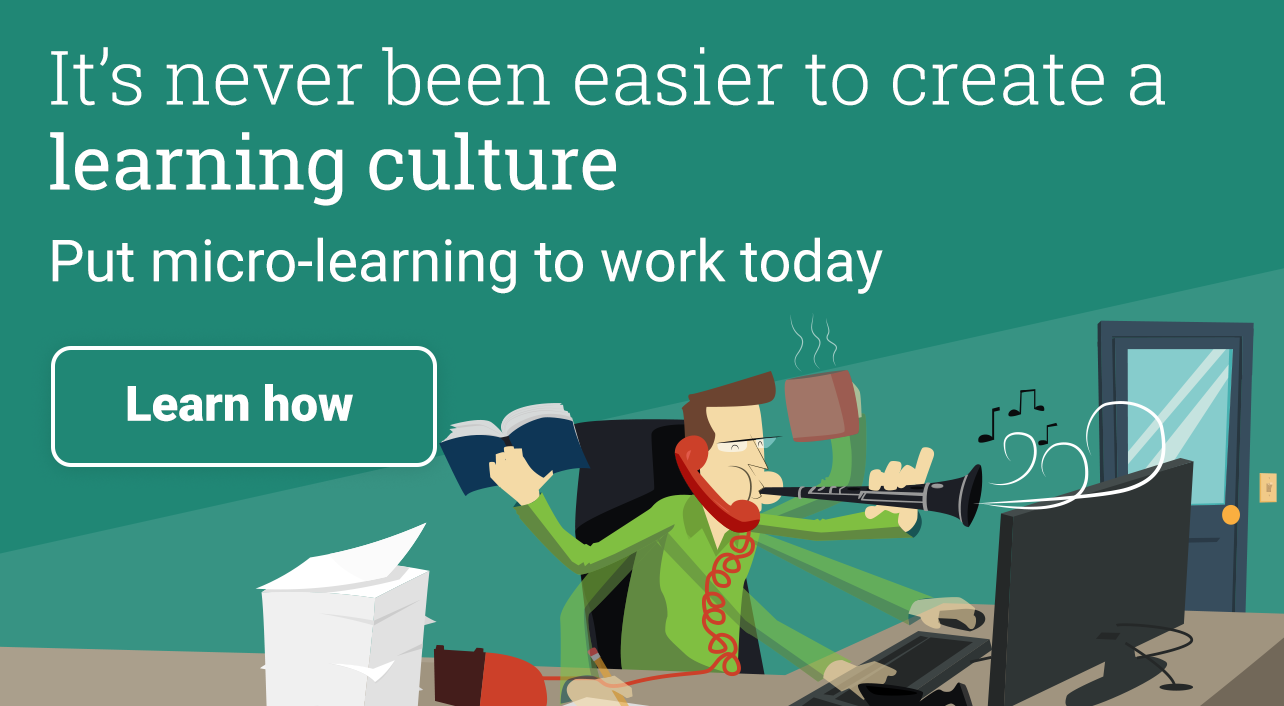- rli
- Blog post
Workplace learning: To boost learners’ motivation, do this
With numerous online resources at learners’ fingertips, workplace learning is often self-directed: Learners decide where and when they want to learn.
For many learners, this shift to solitary, on-demand learning is a real boon. But what about learners who aren’t so motivated?
Like it or not, some learners will be reluctant to integrate workplace learning into their routine, or will simply push it to the bottom of their priority list where it’s as good as forgotten.
So how can you motivate learners to engage in the learning process and stick to it?
A recent study out of Stanford University suggests that a simple addition to your workplace learning program could significantly boost motivation. And it’s all about teamwork.
Research
Researchers at Stanford wanted to explore teamwork and its effect on motivation. Specifically, they were curious about whether someone’s motivation changes when they feel like they’re working on a task together with others versus working on a task alone.
First, the researchers gathered study participants in a room together to meet. Then each participant went off to their own room to work on a challenging task alone. (In case you’re wondering, the task was actually an unsolvable puzzle chosen specifically because it can be extremely frustrating and could lead participants to lose motivation and give up.)
Unbeknownst to the participants, the researchers had divided them into two groups. Before the task began, participants were given instructions depending on which group they belonged to.
The “separate” group were simply told to work on the task alone. They were told that at some point during the task they would be given a tip by the researchers to help them solve the puzzle.
The “together” group were told that one of the other participants was their “partner” and that they would receive a tip from their partner to help them solve the puzzle. This tip, of course, actually came from the researchers and was the exact same clue that the “separate” group received.
So even though both groups were working on the same impossible task with the same clue, the “together” group believed (falsely) that they were trying to solve the puzzle with someone else while the “separate” group believed (correctly) that they were on their own.
As the head researcher stated, “In our studies, people never actually worked together – they always worked on their own on a challenging puzzle. What we were interested in was simply the effects of the perceived social context.”
The results
The effects were dramatic. Compared to the “separate” group, the “together” group worked up to 64 percent longer on the task. They also performed better on the puzzle, reported having more interest in solving it, and reported being less fatigued by the impossible challenge.
Another key finding: In a follow-up session two weeks later, the “together” group chose to do 53 percent more related tasks, which suggests that the motivational effect lasted well after the initial task was over.
As the head researchers stated, “Our research shows that it is possible to create a spirit of teamwork as people take on challenging individual tasks – a feeling that we’re all in this together, working on problems and tasks – and that this sense of working together can inspire motivation.”
Recommendations
Here are some recommendations for utilizing the research findings in your organization. The initial learning experience may be solitary – just like the task in the study – but teamwork can still be integrated into the learning process to gain that boost in motivation.
Set up a buddy system.
The study demonstrates that having a partner (real or imagined) can greatly improve motivation and performance. So consider instituting a buddy system in your workplace learning program.
While the study suggests there is a social upside as well, the practical learning benefits are pretty straightforward. When a learner has someone they can reach out to for clarification or for help, they can more easily work through challenges and stay motivated when the going gets tough. And strengthening the social bonds between team members or colleagues is a pretty nice side effect.
Conduct group learning sessions.
While your learners may access e-learning for their initial learning experience, group sessions can help lock in that new information. And it can also create a feeling of teamwork and togetherness associated with learning.
Gathering learners together creates an opportunity for several valuable activities, including discussing new information, practicing skills and helping each other through challenges. These group activities improve understanding of the content and help solidify the new information.
Create peer learning opportunities.
Learning new skills from a subject matter expert can be powerful, but peers can also play an important role. When an employee with just a little more experience helps a slightly more junior employee (perhaps by simply giving pointers, like in the study), it not only builds teamwork but can improve motivation. Research shows that there’s a special power in learning from someone “in the trenches” with you.
Make learning a team objective.
While there may be unique learning goals set for each individual in your team or organization, learning should also be framed as an overarching team goal. Learning should be part of the team culture and knowledge sharing should be part of the team fabric. The study suggests that when people feel they are working together toward a common goal, motivation and performance can skyrocket.
As the researchers stated, “It does not take enormous effort and change to create this feeling of togetherness. Subtle cues that signal people are part of a team or larger effort ignited motivation and effort. Careful attention to the social context as people work and learn can help us unleash motivation.”
Source
Carr, P. B., & Walton, G. M. (2014). Cues of working together fuel intrinsic motivation. Journal of Experimental Social Psychology, 53, 169-184. https://doi.org/10.1016/j.jesp.2014.03.015

Get a demo of all our training features
Connect with an expert for a one-on-one demonstration of how Rapid Learning can help develop your team.



